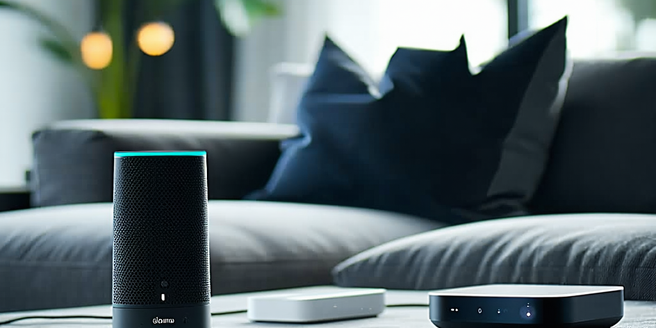Smart Home Integration Techniques

Understanding Smart Home Protocols
Smart home technologies rely on a variety of communication protocols to function seamlessly. These protocols, such as Zigbee, Z-Wave, Bluetooth, and Wi-Fi, each have their unique strengths and limitations. Understanding these protocols is crucial for anyone looking to automate their home efficiently. Zigbee and Z-Wave are popular for their low power consumption and mesh networking capabilities, making them suitable for devices spread throughout a home. Wi-Fi, on the other hand, offers a more straightforward integration with existing networks but at the expense of higher power use. Bluetooth is ideal for point-to-point connections but is limited in range. Choosing the right protocol depends on the specific devices being used and the overall automation goals. It is essential to research how these protocols interact to ensure compatibility and optimize the performance of smart home devices.
Choosing the Right Devices for Your Needs
When it comes to setting up a smart home, selecting the right devices is key to meeting your specific needs and preferences. Begin by evaluating which areas of your home would benefit most from automation—be it security, lighting, or climate control. Consider devices that are both compatible with each other and support the smart home ecosystem you have in mind, whether it be Google Assistant, Alexa, or Apple HomeKit. It is also important to account for durable and reliable products that come with robust warranties and customer support. As technology evolves, investing in devices that offer firmware updates can safeguard against becoming obsolete. Additionally, think about scalability and how your initial setup can expand over time without requiring significant overhauls in infrastructure or system compatibility.
Setting Up a Centralized Control Hub
A centralized control hub is essential for efficient management and integration of smart home devices. This hub serves as the command center, allowing users to control and automate various systems from one interface. Hubs such as Samsung SmartThings, Apple HomePod, or Amazon Echo can bridge different protocols, enhancing device compatibility. When setting up a hub, ensure it is placed in a central location within the home to optimize connectivity. Familiarize yourself with the hub’s app interface, which should provide intuitive control options and easy setup procedures. With a central hub, users can customize routines, such as automating lights or adjusting thermostats based on time or occupancy, streamlining the smart home experience. The hub should also support voice commands for hands-free operation, adding convenience to daily tasks.
Integrating Voice Assistants Effectively
Incorporating voice assistants into a smart home setup can greatly enhance convenience and accessibility. Devices like Amazon Alexa, Google Assistant, and Apple Siri enable hands-free operation of connected devices, allowing users to control lighting, appliances, and security systems with simple vocal commands. When integrating voice assistants, consider their compatibility with existing devices and the broader smart home ecosystem. Set up routines and shortcuts to automate repetitive tasks, such as turning off lights at night or setting morning alarms. It is also essential to position smart speakers or displays in central locations with good acoustics for optimal voice recognition. As voice assistants continually evolve, stay informed on new capabilities and integrations that can augment your smart home experience, making everyday interactions more seamless and intuitive.
Ensuring Data Privacy and Security
With the integration of smart home devices, protecting data privacy and security becomes a paramount concern. To safeguard against potential vulnerabilities, start by securing your home network with strong, unique passwords and regularly updating router firmware. Enable two-factor authentication on smart home accounts when available for an additional layer of security. Be cautious of the data that smart devices collect and how it is shared, reviewing privacy settings and policies regularly. Furthermore, regularly update your devices’ firmware to protect against newly identified security threats. It is also advisable to isolate smart home devices on a separate network from personal computers to minimize exposure risk. By taking these proactive measures, homeowners can enjoy the convenience of smart devices while minimizing potential security risks.
Troubleshooting Common Integration Issues
Despite best efforts, smart home integrations can sometimes face hiccups. Familiarizing yourself with basic troubleshooting can help resolve issues swiftly. Connectivity problems often arise from insufficient Wi-Fi coverage; hence, ensuring that your home network has strong signals throughout is crucial. Rebooting devices or the hub can resolve many syncing issues, as can ensuring all devices have the latest firmware updates. Device compatibility is another common barrier—use manufacturer-provided compatibility checkers or forums for real-world advice. Additionally, analyze error messages carefully as they often suggest specific solutions. Persistent issues may require resetting devices to factory settings and reconfiguring them. Documenting setups can also be helpful for future reference or when seeking technical support, allowing for quicker and more effective problem resolution.